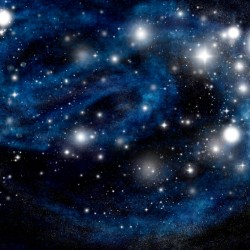Despite advances in astrophysics in the past decade, such as the discovery of exoplanets beyond our solar system, we do not know what makes up the majority of the universe. The visible matter (stars, planets, stellar objects) only accounts for 2% of the mass of the universe. What makes up the rest? The rest is “dark matter and “dark energy,” but whatever they are remains a mystery. I forward the latest scientific theories to explain them in my book, Unraveling the Universe’s Mysteries, available on Amazon.
In essence, the bulk of the scientific community believes that dark matter is a weakly interactive massive particle (WIMP), but there is no sound theoretical evidence or any physical evidence to support this theory. In my book, I suggest we view it as a form of energy and consider theories and experiments to confirm/refute this conjecture.
Dark energy is the term science uses to describe the cause of the accelerating expansion of the universe. I put forward a new theory to explain dark energy, namely, the existence equation conjecture. This theory is derived from Einstein’s special theory of relativity. The resulting equation implies that existence (movement in time) requires energy, which is being siphoned from the vacuums of space. Science can prove and accepts vacuums contain energy and give rise to “virtual particles.” As energy is removed, the vacuums become less mass dense (since energy and mass are related by Einstein’s ionic equation, E = mc^2), and the gravity that defined the vacuums becomes weaker, causing the vacuums to expand. This causes the expansion of the universe to accelerate for the furthest and oldest galaxies.
I discuss dark matter, dark energy, virtual particles and the latest scientific theories on my YouTube Channel, Del Monte On Science.

Isn’t it possible that the universe isn’t being push by some form of invisible energy or matter. But, that the galaxies are being pulled into the part of the expanding universe that is empty and doesn’t have any matter in it. Just like a balloon while expanding . It keeps getting bigger, because there is less pressure on the outside as compared to the inside. If you built up pressure on the outside you could collapse the balloon. Or as the pressure is decrease on the outside the balloon would eventually burst, not because of a push to burst but as a pull apart to burst. The closer the oldest galaxies get to end of the expanding universe, causes the galaxies to be sucked into the void more quickly. I suppose this is like which came first the chicken or the egg. Are we being pushed or pulled apart? Perhaps a new way of thinking, could help solve the riddle. perhaps it’s the lack of the existence of energy. Yours repectfully, John